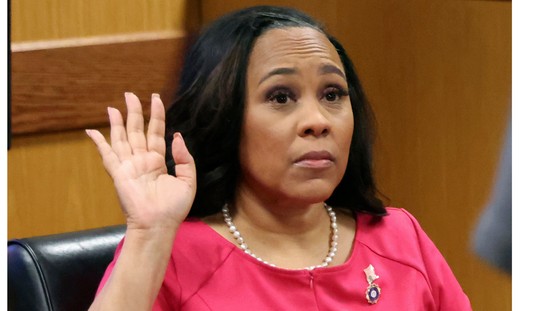Translation: If you disliked our plan, you still have to keep our plan. The Obama administration took a victory lap based on dubious-at-best enrollment figures after the deadline passed to sign up for ObamaCare, but Americans aren’t running alongside. Public opinion remains largely fixed, Gallup reports, more than a month later (via Taegan Goddard):
Although the Obama administration is boasting higher-than-expected enrollment for the Affordable Care Act, Americans’ attitudes toward the healthcare law have changed only marginally since the open enrollment period ended for 2014. A steady 43% of Americans approve of the 2010 Affordable Care Act, also known as “Obamacare,” while a majority continue to disapprove of it, roughly where sentiment was before the enrollment window officially closed on March 31. …
At the moment, there appears to be a rare lull in media scrutiny and political acrimony toward the healthcare law. The opportunity to buy individual health insurance policies through federal or state-run exchanges officially came to a close on March 31, 2014. The number enrolled now exceeds 8 million, and the high tally gave the impression of a good finish to what had been a very bad start, plagued by a botched website launch in early October and then reports of canceled insurance policies due to new, Affordable Care Act-inspired regulatory standards.
Nonetheless, public opinion about the healthcare law has been relatively steady throughout this front-and-center saga, mostly immune to both the good and bad developments. Approval of the law fell to 38% in early January 2014, when the federal exchange website’s glitches continued to plague the rollout of the marketplaces. Approval ratings improved slightly once the website was fixed and the public relations fiasco receded.
The long-term view of the law hasn’t changed much, either. Gallup respondents split 44/37 on whether ObamaCare will make the healthcare situation worse or better. Both numbers fall within the margin of error with all of the other results in the Gallup series over the past year.
That may be a bigger problem for the White House than it first appears, though. The Obama administration needed a big boost after open enrollment that resulted from people gaining coverage, but that has not materialized. The problem for the White House will be what happens when people actually start to use it and find that they can’t keep their doctor and have to pay more out of pocket before benefits kick into play. The next few months will generate plenty of disillusionment, even before the expected premium shock coming in the early fall.
That may not be the only bad autumn for this White House, either. A University of Minnesota economist analyzed the data from the final enrollment reports and predicts that by the fall of 2016, the US will have more uninsured than when we started with ObamaCare, and premiums will skyrocket out of sight just before the presidential election:
Stephen Parente, a University of Minnesota health economist who advised Sen. John McCain’s (R-Ariz.) 2008 presidential campaign, used the Obama administration’s final 2014 enrollment reports and his microsimulation model to project health plan prices and enrollment over the next decade. His projections, shared first with the Washington Post, find an increase in individual plan enrollment in 2015 and 2016, before sharply dropping off in 2017 and then slowly decreasing below 2015 levels by 2024. At the same time, he projects a steady decrease in employer coverage that will be steeper than the gains in Medicaid enrollment, resulting in a greater number of uninsured 10 years out. …
So, how does Parente’s model explain the big drop-off in coverage between 2016 and 2017? He cites two major factors: the scheduled expiration of ACA programs meant to blunt major rate hikes and the phasing in of new health plan requirements as old health plans come to an end.
On the first point, the temporary reinsurance and risk corridor programs are scheduled to end in 2016. These programs are designed to stabilize premiums as insurers adjust to the health-care law’s new coverage requirements, with the idea that the reformed market will settle within three years.
To the second point, Parente estimates between 4 million and 6 million people will see their existing individual coverage end in the next few years when either their plans lose grandfathered status or the White House’s extension of non-compliant health plans runs out near the end of 2016. These holdovers from the individual market predating the ACA are expected to be younger, healthier and more sensitive to price.
Of course, by this time the Obama White House will be making retirement plans of their own, so they may not care much about what happens to Democratic political fortunes in the final weeks of the next presidential cycle. From these projections and the polling, though, it appears ObamaCare is as popular now as it’s ever going to be … and that’s bad news for the White House now, and not just in 2016.








Join the conversation as a VIP Member